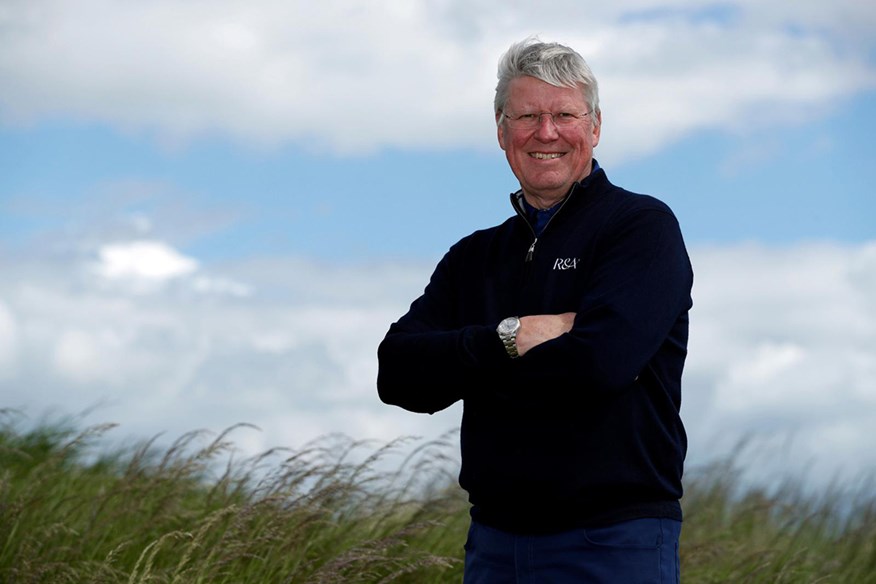EXCLUSIVE: Martin Slumbers talks LIV, Saudi investment, ball rollback and future Open venues
Last updated:
In an exclusive interview, R&A CEO Martin Slumbers discusses golf’s financial sustainability, whether he’ll work with the Saudis, what the future holds for LIV, The Open and the golf ball, and a whole lot more.
All around the world, golf is booming. An additional 10 million adult golfers (outside the USA and Mexico) are now playing the game since 2016, with 61.2 million engaging with the sport in some form. The R&A has been the driving force behind this growth, bringing newcomers to the sport through its various championships and programs which have been designed to make the sport more inclusive and accessible.
The man responsible for governing and modernizing the game is Martin Slumbers, the unofficial leader of every golfer and golf club in 145 countries – one of the Most Influential People in Golf.
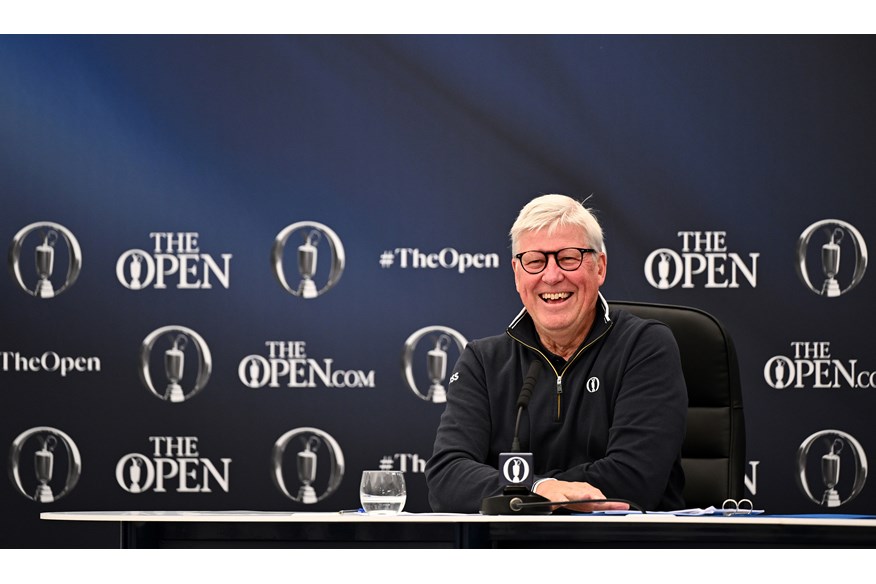
The R&A has done – and continues to do – a lot of good in the game under Slumbers’ watch, including Golf It!, a new community-based golf and entertainment facility in Glasgow which he calls the future of the game. But not every decision and proposal this year has been met with universal approval.
We sat down with the head of the R&A and spoke at length about the Rules of Golf, diversity, pace of play, the gender pay gap, and the qualification criteria for The Open. We also quizzed him on LIV’s world rankings failure, changes to The Open rota, the PGA Tour’s reluctance to roll the ball back, and whether the R&A will enter talks with the Saudi Public Investment Fund…
You’ve got a fascinating back story. You were born in Brighton and grew up in a family that had no background in golf. You graduated with a degree in production engineering and economics and spent three decades working as an investment banker before retiring in March 2013. Correct so far?
Correct.
Then, in October 2015, you replaced Peter Dawson as the head of the R&A. What did you do in those two and a half years to position yourself as the best candidate for the most important job in golf?
It’s been quite the adventure, hasn’t it? As you say, I spent all that time in investment banking, traveling the world. Then I got to 53 and the one thing I really wanted to do was play full-time golf and see how good I could get. And I did just that. I played solidly for about six months or so, but I found it very difficult being on my own and I grew enormous respect for people who do play for a living because it takes a mental discipline that I didn’t have.
I started thinking about how I could combine playing serious golf with working and I got called out of the blue by a firm of head-hunters, who said: ‘Would you like to interview for Peter Dawson’s job?’
To which I replied, ‘I didn’t know it was available and I’m not going to get that job because I’m not part of the establishment.’
They wanted to cast their net wide, so I went along and I was completely hooked from the first interview. I was fortunate that they offered me the job. I got very lucky, but what I didn’t realize is how much I love the business side and how passionate I am about driving the game forward. Most of my time in these eight years has been spent trying to modernize the sport while being reflective of history.
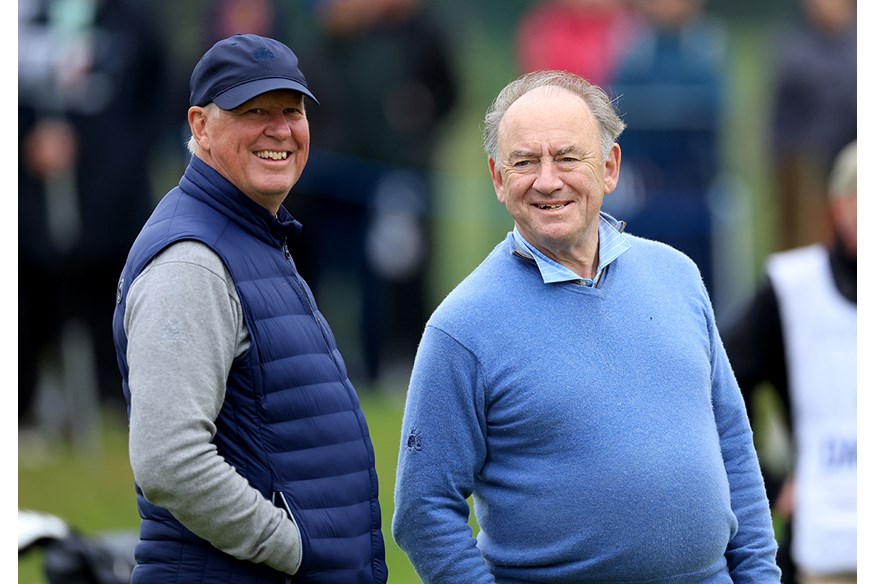
How would you rate your performance so far?
Gosh, that is the hardest question you could ever ask. I’m one of those people who is never satisfied, but I would say I’ve achieved a lot of what I wanted to do when I first sat down in my office. If you cast your mind back to 2015, golf was declining. The reality was that golf club membership had been declining year over year since 2006.
I think two things have happened. From an R&A perspective, we have doubled our investment into the game. And then we got lucky with Covid. Golf was a big winner out of it. But what I’m most proud about is that golf has maintained most of the people, if not more, that we gained during Covid. I don’t think many sports have done that.
There are now over 100 million people who consume golf around the world and that’s pretty fantastic.
Every few months the R&A seems to launch a new campaign or project. What’s been the biggest success story this year?
There are two things but not just this year. I think it was in ‘17 when we started the Women in Golf Charter and that’s had tremendous traction in golf clubs. And then the Women in Leadership program that we added on top of that has created opportunities for talented women to develop their leadership skills.
We’ve just celebrated five years of that program and of the 140 women that have enrolled, over 80% of them have been promoted. Through those two things, we are seeing more women and girls playing golf and more women working in the game.
The second thing is the investment we made to promote the physical and mental health benefits of golf. We started working on that seven years ago and with Gareth Bale joining us as an ambassador, we’ve seen a genuine pickup in participation with people realizing that golf is not just for middle-aged men. In a post-Covid world, we’re all a lot more conscious of our health, so I think that has real traction and is a potential game changer.
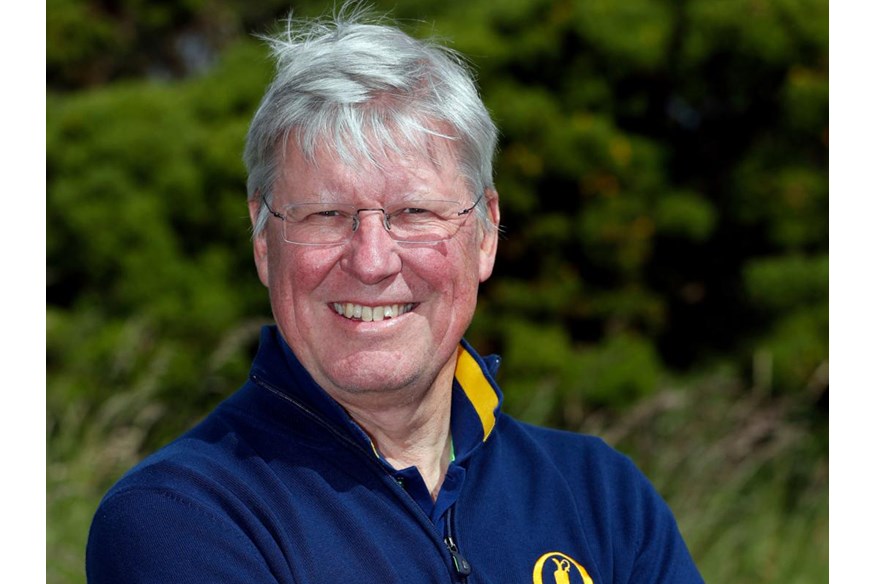
One idea that gained a lot of headlines was the ‘Golf on Prescription’ pilot, which launched in Fife in February. What was the outcome of that?
It’s still in progress. The University [of St Andrews School of Medicine] is providing the academic oversight, so it’s not us. It’s a properly independent review. But the early signs are that it is working. And if it goes to plan, what a fantastic opportunity for golf to become part of the solution at a time when the NHS is under pressure. We want to be able to say that golf is good for your health and to be able to back it up with real results.
From your research, what are the biggest growth opportunities in golf and how is the R&A looking to tap into those?
Of the 100 million playing golf worldwide, 61 million are outside the United States and that’s the first time since the 1850s that more people are playing golf outside of the United States than inside. But what really stands out is that 25% of those are female. I think there’s still a tremendous opportunity to grow that space.
I also think we need more facilities which are aimed at people who don’t play golf today. That’s really how GolfIt! came about. I always wanted to have a facility that was anchored in the community because I felt that’s where golf started. I see tremendous opportunities for that.
In a booklet published by the R&A, titled Inspire our Future, it states that: ‘We need to attract more women and children into golf via grassroots, including embracing short and less traditional forms of the game.’ Is the new Golf It! facility an extension of this blueprint?
One hundred percent. Golf It! is what I call a physical manifestation of how we think the game will grow. It’s not a competitor to regular clubs. That’s absolutely not what it is. It is a way of bridging the traditional game and people who don’t see golf as part of their life. The first month that we opened here, one million golf balls were hit. And a month later, another million were hit.
As a result, the driving range has just had to close for six weeks.
Absolutely correct. We’re going to have to upgrade it. I don’t think there are many ranges in the country where that many golf balls are being hit. But it’s not about ‘the biggest is best’. What is really exciting to me is the type of people coming. It’s families and it’s young people.
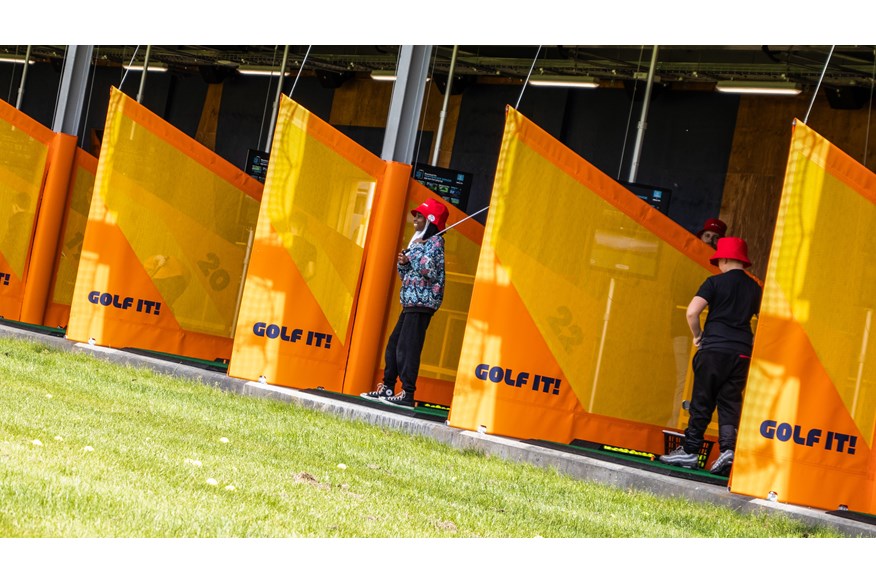
Is Golf It! just a one-off or are their ambitions to take the concept elsewhere?
We’ve made a very significant investment. If we make this work financially, then absolutely, we will look to do more. I don’t want to overstate things, but we’ve had 10 inquiries from around the world, saying, ‘Can we come and look at this because it might work in our country?’ And I find that exciting.
When you look at the typical golf club membership model, do you think the system is outdated?
Not necessarily but maybe. I don’t often sit on the fence. There are a lot of things about golf clubs that are brilliant, but if they want to evolve, they need to adapt and look at the product through the eyes of the younger generation. Golf It! does that and it was based on a lot of market research.
One of my favorite things to do was to go into a golf club and get my mobile phone out to see if anyone complained. If they didn’t, I used to ask, ‘Can I get onto the Wi-Fi?’ It sounds slightly churlish, but if you’re 16 years of age, that’s a minimum. I would like to see clubs being ever more business-orientated, thinking about the product that they’re trying to sell.
Would you like to see more golf clubs introducing gender-neutral tees?
Yes, I do, but I don’t see it as gender. I think about them as ability-driven tees. That’s where America gets it right. I genuinely believe there’s become too much of an obsession around how far you hit the golf ball. Golf should be fun and I think too many people play off tees that are too long for them. I play to a one handicap, but I’m over 60. I don’t go to the back tees anymore because I don’t hit the ball far enough.
Historically, golf has struggled to appeal to more ethnically diverse communities. We know the R&A engages with and supports societies like Black British Golfers and the Muslim Golf Association, but is that enough?
We can always do better. We’ve done an enormous amount to promote women’s and girls’ golf. I’m very proud of what we’ve achieved there. But that doesn’t mean we’re stopping and it is similar on racial diversity. We’re trying to identify how to evolve and that is absolutely something that I think has an opportunity to grow the game. If you look at what our purpose is that is published on our website, it has the words accessible and inclusive in it and we mean it.
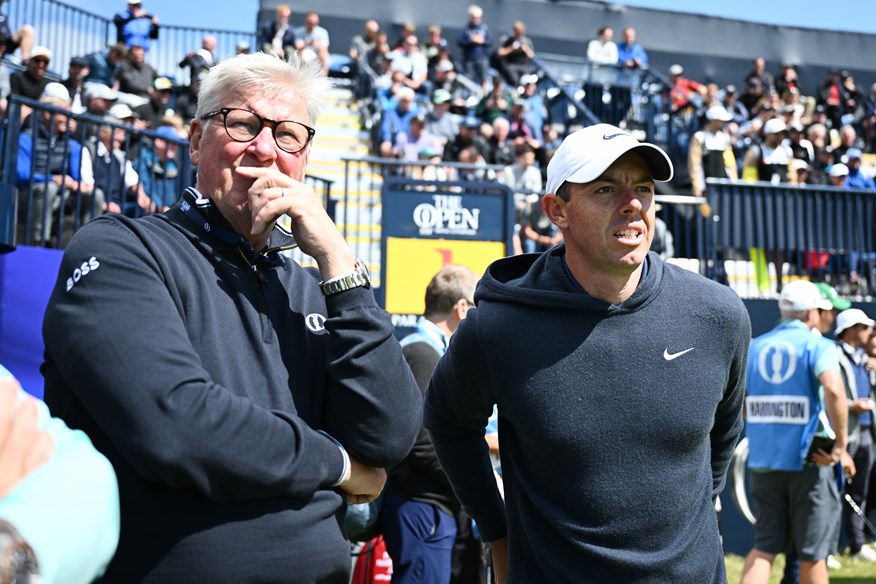
Big changes are coming to the Rules of Handicapping in 2024, except no one seems to know what they are yet. What can you tell us?
Not much because the governance committees are still finalizing the process. What you will see is an evolution of the World Handicap System. There’s not enough W in the WHS from a technology point of view. If I go to Portugal and play golf, I have to bring my scores back and enter them at my own club. We need to move beyond that.
I am a big fan of general play. I keep reading that people are taking advantage of general play but on the whole, the more scores that we put into the system, the more reflective it is of our current playing ability. With the old CONGU system, the average number of cards submitted in the year was only three. So, I don’t buy the argument that CONGU was a better system.
A couple of policies implemented under your watch include ready golf and putting with the pin in. What’s more important to you: Improving the pace of play or limiting how far the golf ball goes?
(Laughs). Can I pick both? From a big-picture strategic point of view, they’re two different things. Every piece of research that we do around why people don’t play golf or don’t play more golf has pace of play in the top three reasons. I absolutely believe we don’t play golf fast enough.
Now, I am not an advocate of a two and a half hour, run around the golf course. But I am an advocate for getting on with it. And I do wish professional golf would play faster and we will keep pushing that.
The golf ball is about reflecting modern life today. Without a shadow of a doubt, the ball is going a lot further than it was 20 years ago. Now the core technical rule around that hasn’t changed since 2004, so it’s nearly 20 years. But the game has changed. And as a sport, we need to understand our environmental responsibilities.
If we want to be viewed as part of the solution, we must understand our environmental responsibilities. And that includes the footprint and the size of the footprint on which we play golf. We can’t keep expanding golf courses. We can’t keep putting that pressure on operators and facility owners to build evermore tees. This is about protecting the future of the game.
Were you surprised by the PGA Tour’s decision to reject the proposed rollback rule?
I would say I was disappointed.
Without their support, what happens next?
We will announce that in a couple of months. But what I can say is doing nothing is not an option.
Playing devil’s advocate, golf is the only sport where amateurs play with the same equipment as the pros. If you change that, doesn’t golf lose its biggest selling point?
Some people think it does. I don’t. To think that you and I play the same game as a top PGA pro is nonsense. They walk onto the golf course and walk back 50 yards. Teeing grounds are the ultimate difference in the game. If you look at golf in the broadest sense, 0.1% play for money and 99% play for the like or love for the sport. If the 0.1% didn’t exist, golf would still be played on Saturday morning.
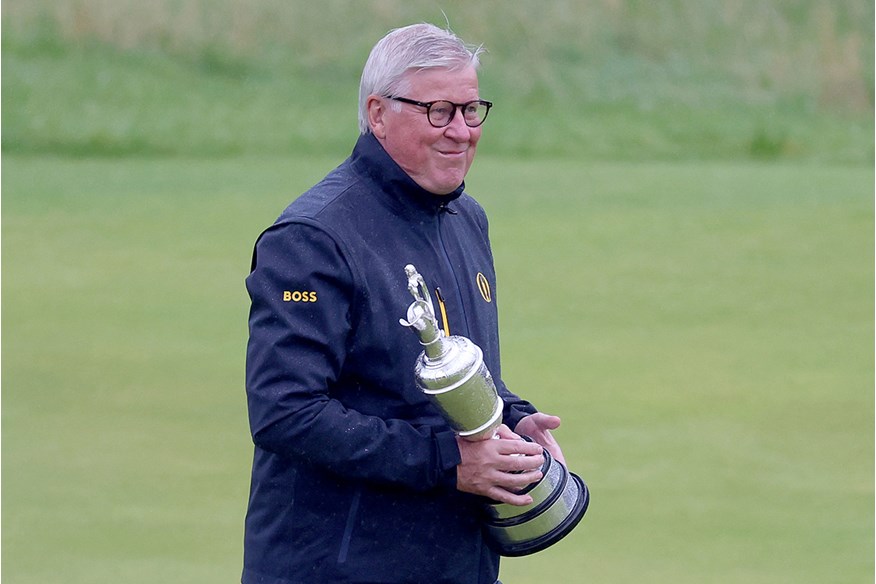
Let’s move on. A lot of people, including Justin Rose, remain disappointed that the men’s and women’s Open are not shown on free-to-air TV. Is there not an argument that the greater exposure would outweigh the money from Sky?
I understand Justin’s position. But professional golf is a business and the business is about generating enough revenues to pay the appropriate prize money, but also to invest in the game around the world. It is easy to say, ‘Make it free to air,’ but I wouldn’t be able to spend £200 million on the game and who’s going to step in and do that if we don’t?
There used to be an argument, ‘If it is free to air, more people will play the game.’ But they weren’t. For 15 years, there were fewer people playing. And by the way, at that time, it was on the BBC. I’m not saying that’s a perfect correlation because the world is much more complex than that. But we moved to Sky in 2016 and the game is bigger now than it was in 2016.
You’ve got to make unpopular decisions sometimes…
Yes, and what I would love to see is the highlights of the Women’s Open on a lot earlier. At the moment they’re on very late. But part of my job is to convince the BBC that golf appeals to all the demographics, right across the age groups.
Were you aware that the disparity in prize money between The Open and Women’s Open actually grew this year?
Yes, it did, because we had to move up quite significantly for the men. So, we paid $16.5 million for the men and $9 million for the women.
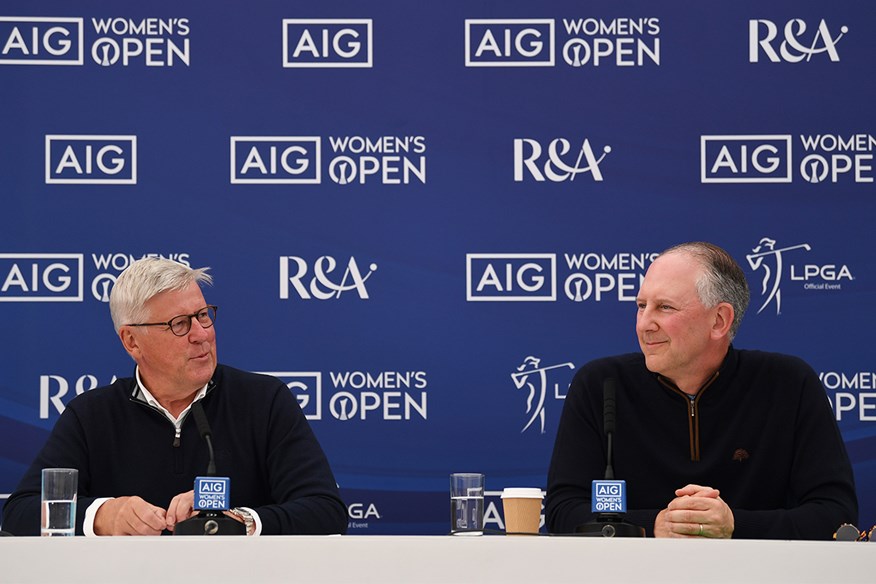
What does that say about the inequality that exists in today’s game?
Look where it came from. We merged with the Ladies’ Golf Union in 2017 and took financial control of the Women’s Open in 2020. Prize money then was $3.5 million and now it’s $9 million, so we’ve almost tripled the prize money. My desire is to work towards parity but in a financially sustainable way.
We lose money on the Women’s Open, significant money. But we believe we’re staging it now on some of our greatest golf courses, and in a really world-class way. We’re now building the financial model around that. But I agree, we’ve still got some work to do to get close to the men.
Despite the increases, this year’s purse for The Open Championship was still smaller than the other three Majors, not to mention the designated events on the PGA Tour and LIV Golf. Have we reached the stage where this growth is unsustainable?
I am concerned that the men’s professional game may not be financially sustainable in the long term. We, the R&A, make individual decisions on prize money, and we will do so in the context of what’s going on in the men’s game and with our broader responsibility to the game.
In your press conference at The Open, you said you are talking to various potential sponsors. Is the Public Investment Fund one of them?
Not at the moment, no. But when I look at where the game is growing, it’s growing quite quickly in continental Europe and steadily here. But Asia and the Middle East is where we’re seeing significant growth opportunities. And I think we’ll see Saudi Arabia becoming increasingly involved in golf as it grows.
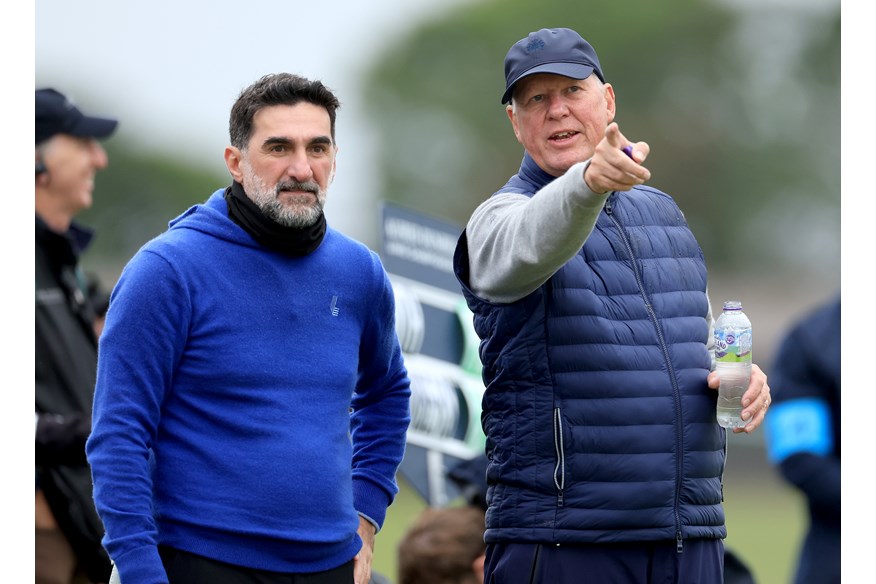
We saw you playing with Yasir Al-Rumayyan at the Alfred Dunhill Links Championship. Would you be open to having a conversation with him despite the obvious sportswashing links?
We talked about golf. And I think that Saudi, as a national federation, is very serious about developing golf in the Kingdom of Saudi Arabia. If we can help them with some of those programs that are tried and tested now, we will help.
It doesn’t make you uneasy about the morality issue?
It is something that we are deeply conscious of, but they are our affiliate, and they are trying to get golf. We help our affiliates all the way around the world. I do think the sport plays a very important role in evolving society. If we can help them get more women and girls in Saudi to play golf, which is what we’re interested in, then I think sport is moving in the right direction.
Now that LIV Golf has lost its application to gain World Ranking points, will you be adjusting the qualification criteria for The Open?
Well as you know, I’m on the board of the OWGR, so I was part of that decision. I think people are confused a little bit about what the rankings are. We know we are talking about world-class players, but the OWGR ranks players who play on equivalent tours. It’s about pathways on and pathways off tours that are fundamentally important to having equivalence.
At the R&A, we invest in all programs for young people so I can look a mother and father in the eye and say, ‘If your child wants to get to the top, there’s a pathway for them to do so that is totally driven by their ability and their willingness to work.’ That’s what eligible tours do.
In terms of The Open, we have adjusted qualifying. We put more spots into our Final Qualifying this year. We had one of the Asian Tour events in Hong Kong which was eligible for LIV golfers to play in.
I also believe that the LIV players were able to play in some of the South African and Australian events, so there was a pathway to get the best players and we will continue to look at The Open entries to make sure that we get the quality of field that we want.
You’ve got no plans to change anything at the moment then?
We’re in the middle of reviewing it at the moment and we’ll publish in January/February time.

Rory McIlroy put forward a case for Portmarnock recently and said there’s every chance the R&A are ‘seriously looking’ at bringing The Open to a course outside the UK. Is that true?
Portmarnock Golf Club have asked the Irish government to consider assisting them to be able to pitch for our biggest championships. We’ve been involved in that conversation and we will be interested in the outcome. We staged our Men’s Amateur there in 2019 and the Women’s Amateur is there next year.
Portmarnock is a wonderful golf course, but there are some fundamental infrastructure changes that only the government can unlock.
Are there any other courses on your radar?
No, Portmarnock is the only one we’re interested in.
In 2017, the R&A committed £200 million towards growing the game at all levels over the next 10 years. How do you intend to do that over the remaining period?
We will continue to improve the revenue of The Open Championship. Royal Troon is already sold out for next year. We haven’t announced the number yet, but I can tell you it’s significantly higher than it was in 2016. We had over 800,000 applications for next year and that’s a testament to the attractiveness of The Open Championship. We will continue to evolve the Women’s Open business model and turn a loss into a marginal profit.
We’re also looking at other opportunities to invest in other businesses that help the game of golf and help our national federations to deliver a better product. We know where we’ve got to go, we just need to execute.
What’s the biggest challenge facing the R&A now and in the future?
The thing that keeps me more awake at the moment is the financial sustainability of the men’s professional game. Professional golf is so important as the shopfront and the last few years has been quite divisive and we need to come together and work closer together for the betterment of the game. It doesn’t help when the game is going through the stresses and strains that it has done in the last few years.
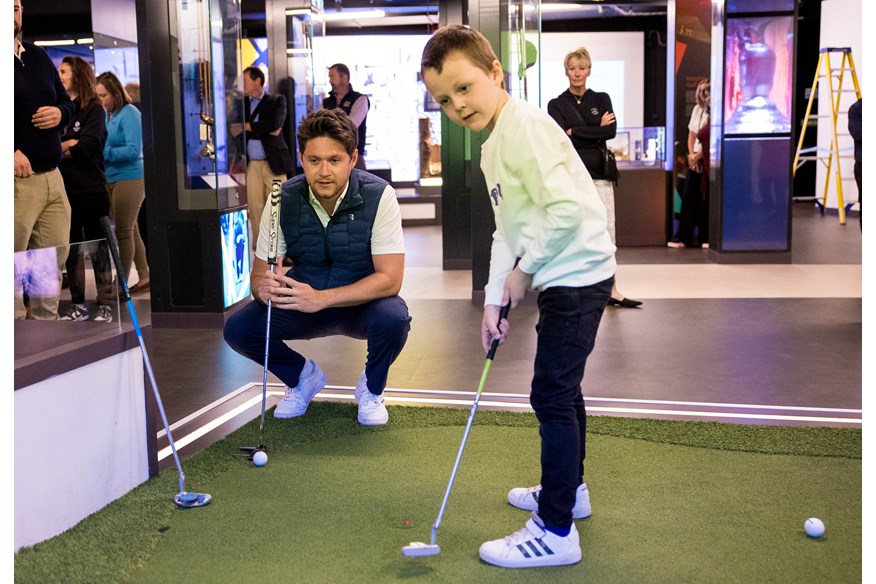
Last year we called you the most powerful man in a suit.
(Interrupts) My sons laughed at that!
How would you describe yourself?
Not like that! I’d rather like to be thought of as someone who’s trying to make a difference in the sport and make it in a big way.
There are some exciting things coming up, like the start of a Monday night golf league. Is that the future of golf? Might we see some R&A Championships where technology is at the forefront?
Well for the first time at The Open last year, we had a VR Open. I think there is a lot of interest in how that could evolve. We’re working with one company on that. We’ve just invested and bought a 50% stake in a technology company called Dot Golf, so technology is an ever-important part of the product we need to run the game. We’ve got a lot of broad things on the plate and a lot of them are technology driven.
Finally, then, what are you most excited about looking ahead to 2024?
It certainly won’t be a quiet year! The most exciting thing for us is we’re launching an African Amateur Championship at Leopard Creek in February. There’s going to be a Men’s Championship and a Women’s Invitational at the same time and I think Africa is a really interesting country where the game could be developed.
If you take South Africa, three of the last five Amateur Championships have been won by South Africans and one of those years they couldn’t travel here because of Covid. Clearly, there’s some fantastic golf coming out of Africa which is why I’m really excited about it.
-
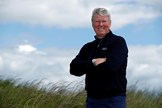 Martin Slumbers was appointed CEO of the R&A in 2015.
Martin Slumbers was appointed CEO of the R&A in 2015.
-
 Golf It! is a new family and community facility in Glasgow.
Golf It! is a new family and community facility in Glasgow.
-
 Martin Slumbers with his predecessor, Peter Dawson.
Martin Slumbers with his predecessor, Peter Dawson.
-
 Martin Slumbers has a close relationship with many of golf's top stars.
Martin Slumbers has a close relationship with many of golf's top stars.
-
 Martin Slumbers played with the PIF Governor Yasir Al-Rumayyan at the Alfred Dunhill Links Championship in October.
Martin Slumbers played with the PIF Governor Yasir Al-Rumayyan at the Alfred Dunhill Links Championship in October.
-
 Martin Slumbers presents the Claret Jug to The Open champion each year.
Martin Slumbers presents the Claret Jug to The Open champion each year.
-
 Our interview with Martin Slumbers, chief executive of the R&A, covers everything from LIV's workld rankings bid and Saudi investment to future Open venues and inequality in the game.
Our interview with Martin Slumbers, chief executive of the R&A, covers everything from LIV's workld rankings bid and Saudi investment to future Open venues and inequality in the game.
-
 Martin Slumbers is one of the most powerful men in golf.
Martin Slumbers is one of the most powerful men in golf.
-
 Niall Horan is one of several celebrity ambassadors for the R&A.
Niall Horan is one of several celebrity ambassadors for the R&A.
